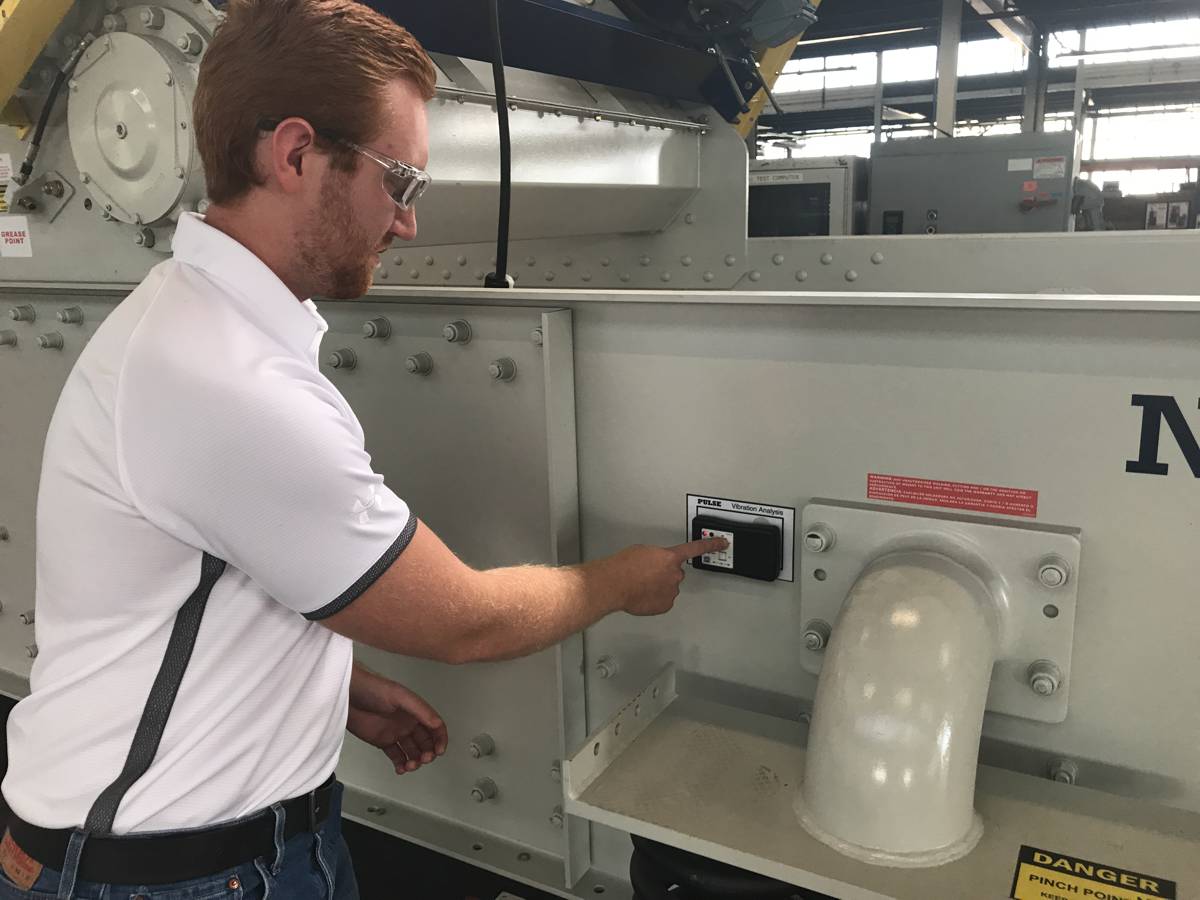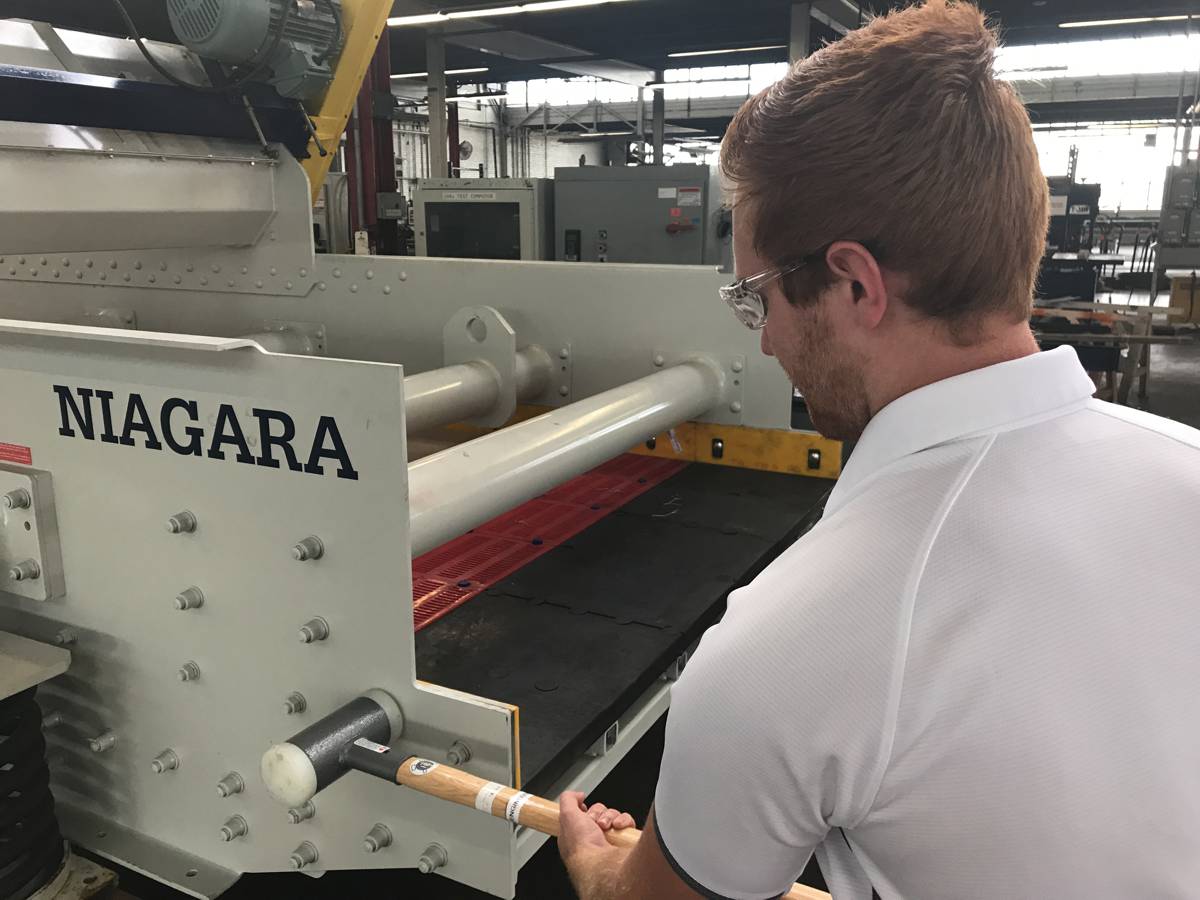Haver & Boecker Niagara launch Pulse Impact Test with experimental modal analysis
Haver & Boecker Niagara adds Impact Testing to its Pulse portfolio with experimental modal analysis.
The impact test — also known as the hammer test or bump test — is now part of the company’s quality assurance program during factory testing as well as on-site. This ensures each machine is properly tuned to avoid operating in resonance, ensuring efficient operation.
With the opportunity to integrate impact testing data with other Pulse portfolio reporting and historical tracking, including Pulse Vibration Analysis and Pulse Condition Monitoring, Haver & Boecker Niagara can provide a more holistic view of the individual machine that helps customers maximize uptime through historical tracking.
Haver & Boecker Niagara’s suite of Pulse diagnostic tools helps operations to monitor the health of vibrating screens for optimum screening performance and equipment durability.
“Increasing customer productivity and profits are at the heart of every Haver & Boecker Niagara innovation,” said Wilm Schulz, Haver & Boecker Niagara’s parts and service manager. “With advances in technology, we’re able to provide real-time information that helps customers make well-informed decisions about their machine. Including impact testing gives us one more data point to extend the life and maintain the health of a vibrating screen.”

Operating in resonance can diminish productivity, incur damage to vibrating screens and pose safety risks. Impact testing involves striking the machine at key points with a dead blow hammer while the machine is off. It typically includes the four corners but can be expanded to additional areas. Collected data is analysed to identify the machine’s individual natural frequencies. Based on results, engineers can adjust machine parameters to avoid these frequencies during operation.
Integration into the Pulse software opens up opportunities for easier on-site impact testing. Natural frequency can shift over time as components are repaired or replaced, resulting in irregularities that could translate into diminished performance, decreased efficiency, increased operating costs and imminent breakdown.
By incorporating impact testing into Haver & Boecker Niagara’s signature Pulse diagnostics tools, producers can ensure optimum screening performance and equipment reliability.

The service program includes a complete vibrating screen inspection by a Haver & Boecker Niagara certified service technician. Following the inspection, customers receive a Pulse Diagnostic Report, which provides an analysis of their vibrating screen and detailed recommendations to extend the lifespan of the machine and ensure its health.
All Pulse Diagnostic Reports are stored in an online data management system, giving customers access to a complete record of their vibrating screen’s service and performance histories. This information allows customers to track changes in vibrating behaviour and predict future performance so that they may shift from reactive to predictive maintenance.
Impact testing, along with the other suite of Pulse services, is a critical part of PROcheck, Haver & Boecker Niagara’s comprehensive service process dedicated to keeping customers’ operations running at peak performance. PROcheck applies Haver & Boecker Niagara’s expertise during inspection of customers’ screening processes in order to recommend best practices for proficiency. It includes diagnostics, processing equipment, engineered screen media, original parts, rebuilds and upgrades, services, plants and process engineering.



















